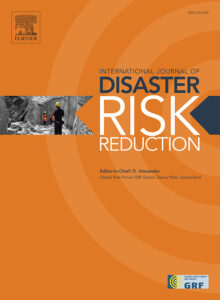Data Collection Tools for Post-Disaster Damage Assessment of Building and Lifeline Infrastructure Systems

Lozano, J., and Tien, I., “Data Collection Tools for Post-Disaster Damage Assessment of Building and Lifeline Infrastructure Systems,” International Journal of Disaster Risk Reduction, Vol. 94, August 2023
Abstract — After a disaster event such as an earthquake or a hurricane, performing comprehensive and detailed damage assessment of lifeline infrastructure is critical to effective disaster response. In recent years, there has been a rapid increase in the implementation of varying tools for this purpose. These tools and resulting datasets include satellites, drone imagery, LIDAR scans, water level sensors, structural strain gages, etc. Each of these tools differs in terms of purpose, the precision of the data collected, and the resources required for data collection and processing. To this point, these technologies have been deployed in the field in an ad hoc and often uncoordinated manner. Coordinating data collection efforts has the opportunity to provide more detailed, accurate, and comprehensive lifeline damage assessment through augmenting datasets, validating information, and filling in information gaps. However, this requires a comprehensive understanding of available tools and their specific characteristics. This paper fills this gap by providing a critical and comprehensive review of the tools available for post-disaster damage assessment. This work focuses on the tools used to assess physical damage in lifeline networks and buildings. Included are tools across lifeline networks, including water, gas, transportation, power, and building infrastructure, as well as across hazard types, including earthquakes and inundations resulting from hurricanes or extensive rain. Each tool is presented and critically analyzed along key dimensions including coverage, precision, and availability over time to provide insights into integrating datasets across tools and identify gaps in existing data collection approaches. The results form the basis for recommendations for improving post-disaster damage assessment, including coordinated data collection, leveraging geographical interdependencies to assess buried infrastructure, and the inclusion of the detailed characteristics of the tool in the metadata. This work is the first to provide a systematic and comprehensive analysis of the tools for building and lifeline infrastructure damage assessment and provides a basis for future integration of datasets and development of post-disaster data collection tools.
Leave a Reply